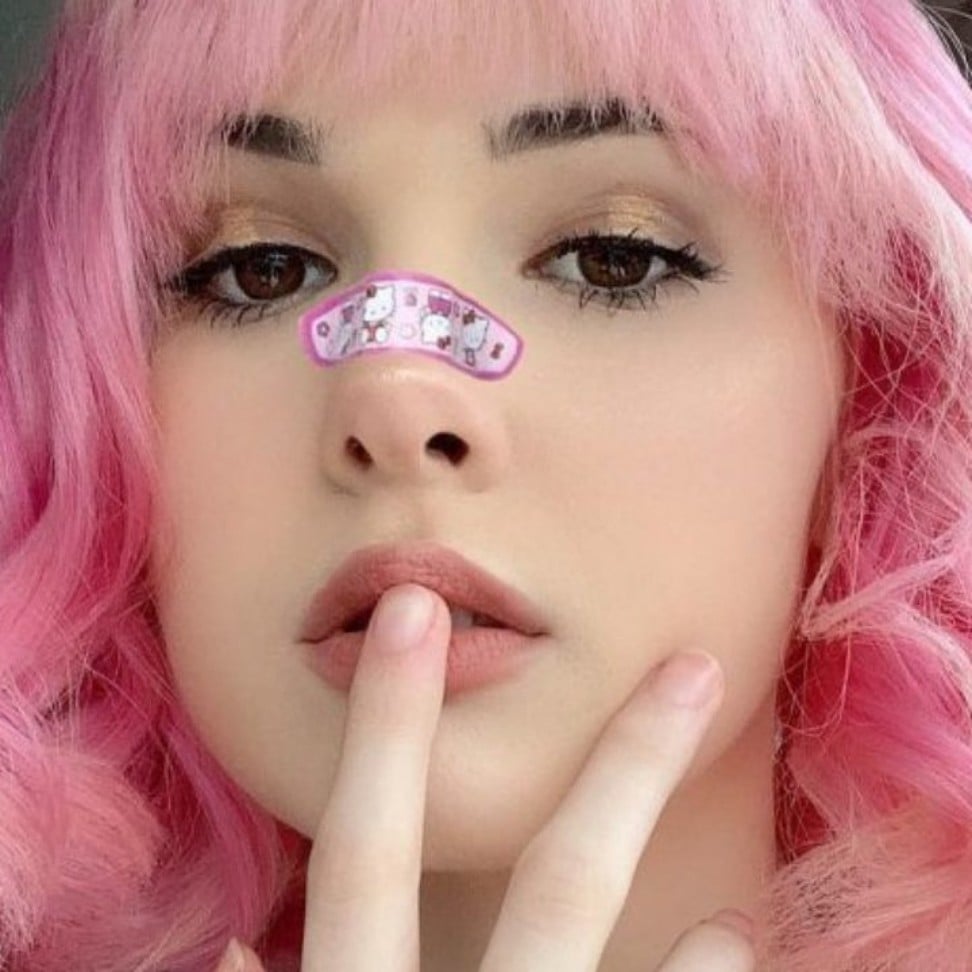
TikTok e-girls and e-boys take on Instagram’s VSCO influencers, topping Google searches and getting more than a billion video views
- E-girls hang out on TikTok, quiet and moody, have thick eyeliner and dyed hair, and keep up with the latest internet slang
- They are a far cry from bubbly Instagram influencers, with their photo-edited faces and streetwear aesthetic
The Instagram influencer has met her match: the e-girl. The e-girl’s emergence this year has corresponded with the rise of TikTok, the short-form video app.
Thousands of TikTok videos tagged with #egirl show girls with thick eyeliner and dyed hair and guys in beanies wearing belt chains – teens who have embraced an aesthetic separate from the VSCO girls and hipsters sporting Supreme and streetwear.
The e-girl (and e-boy) are just the latest iteration of mainstream counterculture, similar to the emo and scene kids who posted grainy pictures on Tumblr in the 2000s. These e-teens live on the internet and are fluent in the latest video games, and their goal is to push the boundaries, in spite of what parents and older generations may think.
The popularity of e-girls and e-boys became such a staple of 2019 culture that they were among the most popular Google search terms for fashion- and outfit-related queries, according to Google’s annual “Year in Search” report.
The e-girl is the modern-day scene girl: both were created as a counterculture to the mainstream aesthetic and standards of beauty. They are tuned into video games and internet slang on online platforms like Discord and YouTube.
An e-girl or e-boy usually has dyed hair (frequently two colours), heavy black eyeliner, pink blush on nose and cheeks, jewellery (septum or another facial piercing, and an O-ring collar or chain necklace) and part anime-, part goth-inspired clothing.

The term “e-girl” started as a derogatory term, used by men to objectify women who they saw as simply looking for male attention online. The first entry of “egirl” on slang-tracking website Urban Dictionary is from June 2009, and it paints a stark picture compared to what e-girl has come to mean today.
However, a new type and definition of e-girl has risen in the last year.

E-girls rose into the mainstream in 2019 thanks to TikTok. Videos tagged with #egirl have more than 1.4 billion views. E-girls and e-boys have established themselves with hundreds of thousands of followers, while others have capitalised solely on parodying the e-girl aesthetic.
Some have attributed the roots of the e-girl to Tumblr, where a sad and moody aesthetic for the sad and moody teens reigned supreme in the late 1990s and early 2000s.

The terms e-girl and e-boy aren’t necessarily used as gender-specific terms. Instead, they’re used to refer to two different type of aesthetics: While the e-boy is a vulnerable “softboi” and embraces skate culture, the e-girl is cute and seemingly innocent.
Ultimately, the e-girl and the e-boy are anti-influencers. “Scene girls and emo girls were a counter to the preppy, Juicy Couture look of the era (see: Paris Hilton) the way e-girls may be a counter to the polished, Facetuned Instagram influencer,” BuzzFeed wrote about e-girls.

